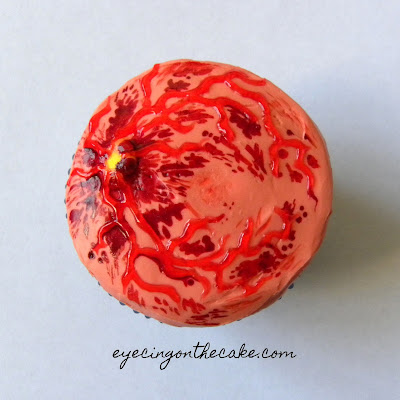 What is a CRVO?
What is a CRVO?A central retinal vein occlusion (CRVO) occurs when there is an obstruction of the central retinal vein, which is the main vein of the retina (the tissue that lines the back of the eye). A blood clot, or thrombus, may occur in the vein as a result of abnormalities in blood vessel size, blood composition and/or blood flow.
Veins carry blood back to the heart. When the main vein that drains the retina is blocked and blood cannot flow out, the blood builds up and leaks out of the walls of the vessels. This leakage causes the retina to swell (retinal edema). When fluid leakage occurs in the area of the retina called the macula (macular edema), central vision is impaired.
We'll be talking specifically about central retinal vein occlusions in this post, but you can also have a branch retinal vein occlusion (BRVO), which affects a smaller vein, or a hemi-retinal vein occlusion (HRVO), which affects either the upper or lower half of the retina. It all just depends on the location of the blood clot.
A CRVO can be classified as non-ischemic or ischemic. Ischemic means there is a shortage of oxygen due to a reduced or restricted blood supply. When ischemia exists in the retina, vascular endothelial growth factors (VEGF) are released. VEGF stimulates the growth of new, abnormal blood vessels (neovascular membranes) to help supply the retina with the necessary oxygen and nutrients. This is bad, because those blood vessels are weak and leak. In the case of ischemic CRVOs, the abnormal vessels can cause a serious type of glaucoma, called neovascular glaucoma. This results in dangerously high eye pressure that is very difficult to treat. Fortunately, most cases (about 75%) of CRVOs are non-ischemic, which is the less serious form and involves less severe vision loss.
 |
| Photos of a non-ischemic CRVO of the right eye |
The most common presentation is sudden, painless loss of vision in one eye. When the eye doctor looks in the affected eye, he/she will see lots of hemorrhages (see photos) in all 4 quadrants of the retina and possibly cotton wool spots, which are fluffy white spots in the retina. The veins of the retina are widened and curly. There may also be swelling of the optic disc. CRVOs are sometimes described to have a "blood and thunder" appearance, because it pretty much looks like something exploded in the back of the eye.
 |
CRVO photo via Wills Eye
|
What are the risk factors?
CRVOs usually occur in persons over the age of 50, and hypertension is the most common systemic association. Other vascular diseases like atherosclerosis, high cholesterol, and diabetes are risk factors as well. Hardening and/or narrowing of the arteries can compress the vein and cause clot formation. Open angle glaucoma is also a risk factor. If a CRVO occurs in someone under 40 years of age with no known risk factors, he/she may need to be tested for blood clotting or thickness abnormalities. How is it treated?
The blockage cannot be undone, so the goal is to treat/prevent the secondary complications. Namely, macular edema and neovascularization. Several clinical trials have shown there are treatment options that help reduce macular edema and improve vision to a certain degree. Early detection of complications and timely treatment are key.
The most common treatment for macular edema as a result of a CRVO is intravitreal injections of anti-VEGF drugs. The drugs are injected into the gel part of the inner eye (the vitreous), and are usually administered every 4-6 weeks. Two such drugs that are FDA-approved for treating macular edema due to CRVOs are Lucentis (ranibizumab) and Eylea (aflibercept). Avastin (bevacizumab), a cancer drug, is an anti-VEGF drug used extensively as well, though used off-label. Steroid injections/implants may be used instead of or in addition to anti-VEGF injections. An intravitreal steroid implant, Ozurdex, is an FDA-approved treatment for macular edema secondary to vein occlusion. Currently in FDA trials: a combo of Eyelea (intravitreal anti-VEGF injection) and Zuprata (suprachoroidal steroid injection) that has the potential to decrease the number of Eyelea injections a patient needs (read more about it here). Laser is not a common treatment with CRVOs, unless there is neovascularization present.
 | |
|
- Optical coherence tomography (OCT) is a scanning laser used to get a cross-sectional image of the retina (see scan above). This helps assess the level of swelling in the macula and track the response to treatment.
- Fluorescein angiography (FA) is used to identify areas of the retina with poor/absent blood flow and helps guide treatment. A dye is injected into a vein in the arm and photos of the retina are taken as the dye reaches the retinal vessels.
CliffsNotes: A CRVO occurs when a blood clot blocks the outflow of blood from the tissue that lines the back of the eye (the retina). If you notice a sudden, painless loss of vision, contact your eye doctor STAT!




























